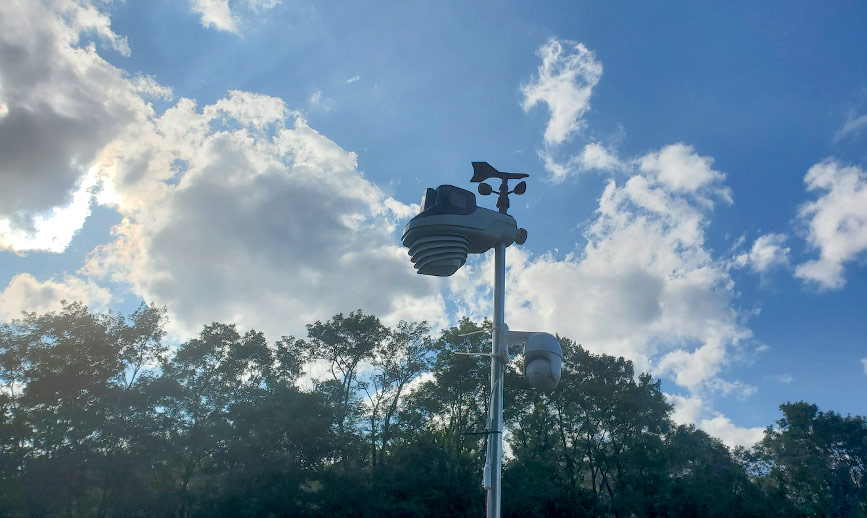Since 1992, I have been involved in many roles within public safety, fire, police, emergency medical, and emergency communications. I currently serve as lieutenant and training officer at North McCreary Fire Department in Whitley City, Kentucky, and have been a trained weather spotter with the National Weather Service (NWS) since 1996. Shortly after that, I became an amateur radio operator to easily communicate with other amateur radio operators and NWS Skywarn Spotters.
I began as a driver at the rescue squad and began EMT classes in August 1994. I completed Basic Weather Spotter classes many times as a Disaster and Emergency Services Deputy Coordinator. Later, I completed the Advanced Weather Spotter classes offered by the NWS in Jackson, Kentucky. Then as a HAM Operator, I was invited to Advanced Weather Spotter and also Elite Weather Spotter workshops. I have traveled to many states for training and have worked with numerous NWS offices on severe weather updates in Nashville; Knoxville, Tennessee; Paducah, Kentucky; Louisville, Kentucky; and Jackson, Kentucky.
My fascination for weather tracking and storm spotting for the county operations center helped me realize that early warning can help people survive natural disasters. Nobody gets this involved in weather without knowing AcuRite or Chaney Instrument Co., let alone the quality and accuracy of the products they offer.
As a hunter and fisherman at a young age, I was aware that barometric pressure, which can be accurately measured by AcuRite products, influences fish and animal behavior. Later, as a firefighter and EMT in 2005, I was injured in a workplace fall and began to notice significant differences in my pain levels based upon weather patterns.
How Does Weather Affect My Pain Management?
After many chiropractic and doctor visits, I detected a correlation of my significant pain with the atmosphere's barometric pressure. Humidity levels, snowfall, and even the rainy season seemed to influence my overall pain levels significantly. I have been treated for fibromyalgia, rheumatism, lumbago, arthritis, and a few other diagnoses.
I may not have always realized it was about to rain, but the night before a thunderstorm or rainy patch, I would always begin to tighten up and have more inflammation. Barometric pressure often drops before bad weather. Lower air pressure pushes less against the body, allowing tissues to expand. Expanded tissues can put pressure on joints and cause pain. After many years, I began to realize that the pain and muscle spasms were directly related to the current weather conditions and my environment, so much so, that I started to track weather outside of my general area and even traveled to other areas for a reprieve of weather-related pain.
For a couple of years, I even kept journals to document the differences in my findings of changes in weather and increased pain. I can say that there were definite correlations to how I felt on any given day.
I don't feel well unless I'm just right; many times, the day was too cold, too warm, too humid, but occasionally, it was just right (reminds me of Goldilocks and the Three Bears). Now I consistently track my local weather data with my very own AcuRite Atlas™ with lightning detection. Knowing my weather data measured in my own backyard keeps me ahead of my pain management and allows me to adjust my medications as necessary.
What is Barometric Pressure and Why is it Difficult to Find its Connection to Pain?
Barometric pressure — or the pressure of the air — can affect joints, but humidity, precipitation, and temperature are also at play. That makes it tricky for scientists to pinpoint exactly what it is about the weather that leads some people to report more pain when it’s cold, rainy, or humid.
As a general rule, approaching weather systems — such as cold fronts, warm fronts, tropical waves, and rain — are usually associated with low atmospheric pressure. Conversely, high atmospheric pressure usually arrives after the passage of such a weather system. When high pressure settles over an area, it often means bright, sunny days and relatively calm seas.
Several studies have tried to pinpoint the kind of weather changes that affect joint pain, but the findings are all over the map. Part of the problem is that the studies have used surveys of just a small number of people, which isn't a very reliable way to measure a common link. In my case, I can also concur that pinpointing is difficult as some storms seem to have a more significant influence on the body than others, and I can agree that humidity is also a very real factor. No matter if it's barometric pressure or humidity, however, I am always informed with my AcuRite weather monitoring technology, allowing me to better manage my pain.
Contact Me!
I participate with the NWS Spotter program and weather chat, and if anyone would like to send a message, I can be reached at: dod-jamie.meece or fire-jamie.meece in the NWS portals. Learn more about NWS Spotter program at How to Become a Storm Spotter.
References:
https://weather.com/sports-recreation/fishing/news/fishing-barometer-20120328
https://www.webmd.com/pain-management/weather-and-joint-pain#1

